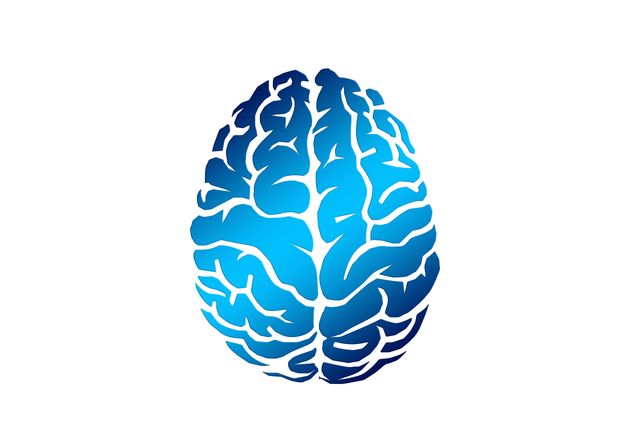Manipulating Memories: Instantly Eliminate a Fear
Memories and Plasticity
Through memories, our past experiences shape how we respond to an event. This is especially true for the formative early years of our lives, during the "critical period" when our neurons can rapidly change by forming new connections and 'pruning' others through elevated neural plasticity. This malleable stage of life enables quick adaptation to new environments and rapid and robust learning. It is responsible for children being capable of picking up a language or skill far quicker than an adult could, and for childhood experiences having a large impact on a persons conceptualization of the world.
Since early experiences can have such an impact on children, a single bad event can cause serious trauma or fear. These fears can follow an individual into adulthood even if the adult recognizes the fear as being irrational. Some adults can even point to the event(s) in their childhood which they think started the fear.
Eliminating a Fear
Imagine if you could manipulate your emotional response as you see fit, if you could selectively remove your instinctive, emotional responses. You could use this to reduce your own suffering and increase your productivity. Such an ability would prove a hypothetical treatment for anxiety and depressive disorders, phobias, addictions, as well as attentive and compulsive disorders. You could be calm during public speaking, and rational during times of high stress. Well, this is probably closer on to reality than science fiction on the scale of possibilities.
Every time that you recall a memory, that memory becomes susceptible to change. This is a useful mechanism by which your mind can update memories with more information. This process is called re-consolidation, and has been extensively studied by psychologists and neuro-scientists in human and animal models. By studying the molecular mechanisms of the plasticity associated with a specific type of memory, this paradigm can be used to alter or erase memories. By cuing the recall of a specific memory through experience, and then administering a pharmacological agent (such as the beta-blocker, propranolol), which causes interference with the protein synthesis necessary to re-consolidate the memory, the memory will be re-consolidated without the emotional valence associated with it.
This concept can be easily applied to treat phobias. Neuro-scientist Dr. M. Kindt has effectively cured individuals of arachnophobia, as can be seen in the Nature video below (watch from 7:00 to 10:30 for fear extinction results). It is as simple as exposure to the fear and administration of propanolol to completely change the relationship that these individuals have with spiders.
Experiment Review: Pharmacological Blockage of Fear Extinction
This process of fear extinction can also be prevented. Researchers W.A. Falls, et al. at Yale University have shown that administration of the drug AP5 to the brain’s fear and emotion structure, the amygdala, can stop the extinction of a fear.
Humans learn by association and context. If a child goes to a doctor’s office to receive a shot, for example, he or she will likely become upset upon returning to the office and seeing the nurse who gave the shot. In what is referred to as Pavlovian conditioning, a neutral conditioned stimulus (such as a doctor’s office) can be paired with an adverse stimulus (a shot) to evoke a fear response from the conditioned stimulus. However, after many subsequent visits to the doctor’s office where the child does not receive a shot, and is perhaps even rewarded with lollipops, he or she will become less fearful of the office.
In a fear conditioning paradigm, the investigators paired the onset of a fluorescent light with an electrical shock. They did this by keeping rats in a completely dark box that had a steel floor, which could deliver a current to the rats’ feet. A noise, or both light and noise were presented before foot shocks, and then recording were taken of the degree to which the rats were startled. “Light-alone” was represented by the recorded response to light and noise minus the response to noise alone after conditioning. Light and noise together elicited higher levels of fear represented by startle than either did alone. Following 60 light-alone presentations, there were significantly lower recordings of startle indicated fear. This reduction in fear response phenomenon is referred to as fear extinction.
Next the researchers wanted to study whether this fear extinction could be stopped by pharmacological intervention. Immediately before these light-alone trials, some of the rats received an infusion of the antagonist AP5, a substance which blocks specific neuron channels (namely the NMDAR in the amygdala) from opening, and other rats received a placebo infusion. Rats who received 1.5 or 6.25 nmol of AP5 were able to extinguish the fear, just as normal rats were. Rats who received the higher doses of 12.5 or 25 nmol AP5 were significantly much less able to extinguish fear response to light. The researchers compared these results with the infusion of another drug CNQX (a non-selective antagonist) to be sure it is the blockage of specifically these channels (NMDAR) that plays a key role in this fear extinction paradigm. CNQX did not block fear extinction, which suggests that the NMDAR in the amygdala play a key role in fear related learning processes.
This experiment gives us a new insight into the biological mechanisms of fear extinction and provides a novel method to inhibit fear extinction in rats. While many more studies are required to give us a more full picture of how emotional responses are learned and unlearned, these results have important implications. If targeting specific amygdala channels with an antagonist blocks fear extinction, then these channels and the neurons they are on play a necessary role in updating fear related information in one’s memory. In the future, perhaps a drug based on these properties could be administered as a way to therapeutically modulate human emotional responses.
This post builds upon my previous post exploring Bio-physical Representations of Memories, and Implanting of Fake Memories on Command. In that post I referred to memories as dynamic representations of a previous conscious experiences which can be stored, updated, and retrieved cue. These memories can be represented physically as engrams, which can be silenced (inducing retrograde amnesia), un-silenced (rescuing the forgotten memory, and optogenetically activated.
Thanks for reading. Feedback is always appreciated!
Recent Articles:
- GMOs: Addressing Environmental and Health Concerns
- Neural Plasticity: Shaping How We View Ourselves
- PTSD: The Psychology and Neurology of Trauma and Psychedelic Treatments
- Attending to the Moment: The Difference Between Knowing and Understanding
- Why Quantum Mechanics can Elucidate the Nature of Consciousness
References:
- Falls, W. A., Miserendino, M. J., & Davis, M. (1992). Extinction of fear-potentiated startle: blockade by infusion of an NMDA antagonist into the amygdala. Journal of Neuroscience, 12(3), 854-863.
- Kindt, M., Soeter, M., Sevenster, D. Disrupting Reconsolidation of Fear Memory in Humans by a Noradrenergic β-Blocker. J. Vis. Exp. (94), e52151, doi:10.3791/52151 (2014).
- Soeter, Marieke, and Merel Kindt. "An abrupt transformation of phobic behavior after a post-retrieval amnesic agent." Biological psychiatry 78.12 (2015): 880-886.
Images:




This is a test comment, notify @kryzsec on discord if there are any errors please.
Being A SteemStem Member
Thanks so much! :)
Great work. I wouldn’t have guessed that a single chemical could influence long term phobias, but the evidence is pretty convincing. Poor rats though.
This is interesting and not really surprising given the role of the NMDA receptor in the formation of memories. I used to work in a similar kind of lab doing trace and delay fear conditioning with rats looking at the function of the dorsal vs ventral hippocampus and the formation of long-term memories. Adding the emotional component (fear) engages the amygdala but we cannot discount the role of the hippocampus in the creation and extinction of memories. We must also keep in mind that in the development of new therapies that the targeting of such medications is extremely difficult as much of these brain studies require a direct infusion of the agent directly into the brain area.
Given that NMDA receptors are ubiquitous, an agent that blocks them all in the brain would cause widespread problems, especially in the formation of new memory, and for long-term potentiation to occur.
At the end of the day what this paper basically shows is that the NMDA receptor is key for the formation of new memories and for the extinction of old. The question that is debated, and I am from this camp, is that extinction is considered a learned behavior rather than forgetting the original learned behavior. This is why it is easy to slip back into old habits because while you may have extinguished the behavior the connections are not completely gone and can be rebuilt since they were not disassembled, but only weakened through long term depression.
Happy to talk more about this if anyone is interested as it was the topic of my thesis and played into my former work on schizophrenia drug and animal model development in my former life.
oh and my thesis was examining protein expression in dorsal vs ventral hippocampus (amygdala and parietal cortex as controls) in both trace and delay conditioning models. Basically I was trying to show a protein expression difference in these two brain areas as my lab had proven it behaviorally through using excitotixc lesions and then through temporary inactivation using musicmol directly infused into these sites
http://www.rci.rutgers.edu/~totto/Yoon%20&%20Otto%202007.pdf
http://www.rci.rutgers.edu/~totto/Czerniawski%20et%20al%202009.pdf
Yeah, this is super interesting work! Thanks for sharing, i've already started a string of open tabs combing through your references. I am very interested in memory and spent a lot of time reading eletro-physiology papers last year, so I love to see a good hippocampus paper!!
You are spot on. I am interested in what your thesis might have consisted of. Did you happen to do work on ketamine? I am close with a handful of researchers who have studied ketamine's selective antagonism of NMDAs and others who have studied it as a model for mimicking schizophrenia (something I don't really think it necessarily does a very good job of personally). Ketamine has also been used for its NMDA affects in treating PTSD, based on the principals touched upon in this post.
This post is geared towards a broad population who might not be familiar with neuroanatomy, let alone molecular or genetic players. But I am much more interested in Neuroscience from a molecular perspective and would be super excited to make posts along those lines if there are interested readers!
Thanks so much!
So its funny you mention ketamine. I use it in my clinical practice for a few applications. 1. Conscious sedation for procedures, especially in children. 2. headache treatment refractory to my migraine cocktail 3. chemical control of agitated patients. I'm not a psychiatrist but I have been seeing ketamine in the literature being reported for PTSD and depression. I find it to be a fascinating medication due to its differing effects at different concentrations.
See this post by Reuben
http://emupdates.com/2013/12/25/the-ketamine-brain-continuum/
In regards to your question about my model development. I used mice and its hard obviously to make a mouse schizophrenic. We used PCP and looked at their hyperactivity as measured by bean breaks in a plastic cage with lasers to quantify how "psychotic" they were.
Schizophrenia needs something more dopamine specific that hits the areas where schizophrenics have their anatomic and physicologic problems.
One of the models I was working on fit for autism better than schizophrenia due to the way it affected neuronal migration in its knockdown form. I wrote it up for an NIH grant but then graduated and went and did bioscience enterprise instead of staying for a PhD. I hoped the PI I gave it to would've taken it under advisement but alas nothing came of it. I looked at that molecule and also GAD expression as its not only over stimulation but also under suppression by GABA in many of these circuits in the CNS, glycine in PNS.
I'm starting a medical toxicology fellowship this summer so geeking out over molecular pharma is what I'll be doing professionally for the next 2 years! Lets get nerdy!
Yeah, ketamine has seen some super vast use recently. The compounding pharmacy that I used to work for started getting scripts for it to be used for such a diverse set of reasons, and like you say very specific dosages. Its there is some very exciting research on its treatment for long term depression! Ill be sure to check out the link later tonight when I have a moment.
That sounds like some super interesting work you have done. Sounds like you combine a good blend of techniques for your research. I am always slow to think of a pharmacological, or genetic intervention as being a perfect model, but the research along the way seems to bear many fruits!
Thanks so much for your post, great to find some other molecular-pharma enthusiasts on here! Congrats on your fellowship, I am envious of your experience (being a mere senior undergrad)!
Hi. @ngans If you would allow it, I would like to translate your article into Korean and introduce your article to KR community. Of course I will reveal the source. Your article is worth reading
Hello @sleeprince, thank you for your interest. I love the idea, and being able to reach a larger audience.
You may translate my articles and post them if:
Thanks so much for reaching out. I hope you find people will enjoy my content :)
Sure!! I am really glad that I can translate your works!! I will notify you whenever I post the translated version of yours.
And could you reveal my account & link when you publish the translated versions on your account?
Of course, I will be sure to include your account, and links to your postings!
Thank you so much for translating, and you may do so with any of my future articles!
Thank you so much !!
Thanks for this read, Nick. I like your approach and overview of the topic.
We truly have common interests :)
Resteemed!
Thanks so much, it means a lot to me!
We sure do. I really appreciate Steemit for connecting me with like minded individuals like yourself!
Great post! I think there is so much to explore related to memory :) In my opinion, one of the most important parts is early education. It is so important for educators and parents also to avoid misconception. I am in education also and have lot's of experience how hard is to correct misconception later. We have to be really careful with that. It is better to say I don't know than tell the wrong fact. In my opinion lot's of phobias and fears are mostly based on the misconception.
Totally agree. It is far better to tell your child that you don't know something rather than mislead them by trying to simplify the truth.
@ngans This is such a well written post! As a pharmacist I myself am very interested in what you wrote about the pharmacological blockage of fear extinction! I will definitely be following you for more content like this. If you like psychology and writing I would appreciate it if you could give me your opinion on my latest post: https://steemit.com/life/@t8scones/life-always-finds-a-way-fighting-loneliness STEEM ON!!
Thank you! I am heading over to check it out now.
Very good article, as a psychologist I am aware of reconsolidation (I employ it often) but was unaware that some researchers have been using chemical interventions to accomplish the same thing. Re-examining traumatic experiences while adding understanding so the narrative becomes less troubling works as well.
Thank you! I touch more on the use for pharmacology for PTSD in this post if you are interested. I would also recommend David Morris's book: The Evil Hours!
This was fascinating. I have to check out your other post on implanting fake memories. actually all of them. Good stuff here
Thanks so much, glad that you enjoyed!!! :)
Great read my friend! You're work is quite extensive. Keep up the great content.